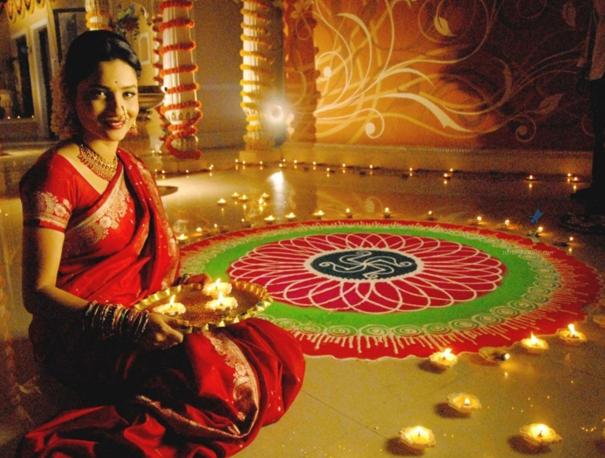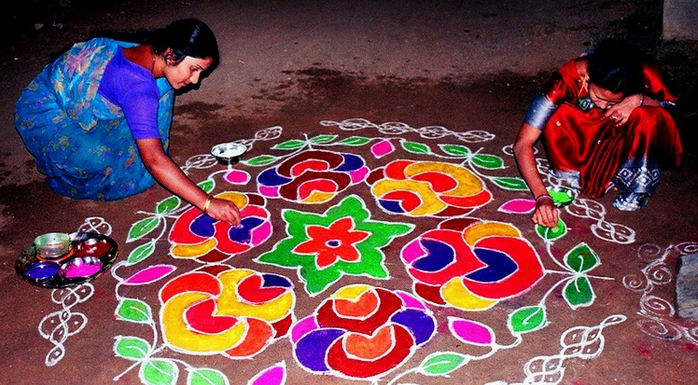 This project was inspired by Diwali, the Hindu Festival of Lights, which is celebrated over five days in October or November each year. During Diwali, special clay lamps called ‘diyas’ are burned to light the way for the goddess of wealth, Lakshmi. These little lamps are often displayed on decorative plates (‘Thali’) that sometimes feature Rangoli patterns based on geometric or flower shapes.
This project was inspired by Diwali, the Hindu Festival of Lights, which is celebrated over five days in October or November each year. During Diwali, special clay lamps called ‘diyas’ are burned to light the way for the goddess of wealth, Lakshmi. These little lamps are often displayed on decorative plates (‘Thali’) that sometimes feature Rangoli patterns based on geometric or flower shapes.

Rangoli designs are also drawn on the ground near the entrance to a home, to welcome Lakshmi, and may be created with coloured rice, flour, pulses, sand or petals.

Art Club (ages 4 and up) decorated their own Thali plates using mung beans, beluga lentils, red lentils and tiny pasta to create a kind of mosaic effect. We began by looking at some photos of traditional Rangoli designs and I explained their significance and how they were made.
 The children were each given a disc of clay and they began their design by using an empty tea-light case to lightly impress a circle in the centre, before marking a flower-like Rangoli design into the surface with a pencil. Each child selected from a range of pulses of different colours and sizes, as well as pasta shapes, and pressed them carefully into their design. When they had completed their designs, I gently flattened each one using a rolling pin, to help the intricate designs remain intact as the clay dried.
The children were each given a disc of clay and they began their design by using an empty tea-light case to lightly impress a circle in the centre, before marking a flower-like Rangoli design into the surface with a pencil. Each child selected from a range of pulses of different colours and sizes, as well as pasta shapes, and pressed them carefully into their design. When they had completed their designs, I gently flattened each one using a rolling pin, to help the intricate designs remain intact as the clay dried.
The following week, we listened to some beautiful Indian Diwali music, turned off the lights and placed a tea light in the centre of each Thali. It was magical watching the flickering flames light up the children’s beautiful creations!
For another Diwali project based on Rangoli patterns, please take a look at my previous project using colourful tissue paper, Rangoli Decorations for Diwali (November 2013).







[…] source: 01, 02, 03, 04, 05, 06, 07, 08, 09, 10, 11, 12, 13, 14, 15, 16, 17, 18, 19, 20, […]